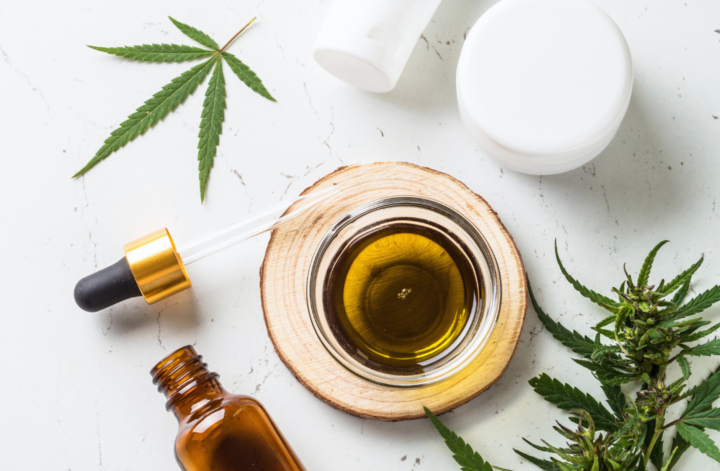Managing stress and staying calm under pressure are essential skills in today’s fast-paced world. Developing effective strategies to focus on the task at hand helps individuals navigate challenging situations with greater ease and confidence. By learning how to control breathing, reframe thoughts, and prioritize tasks, anyone can enhance their ability to manage stress.
Many lead busy lives filled with deadlines and competing demands. Understanding how to maintain composure is crucial for making sound decisions and fostering a positive environment. Simple techniques like mindfulness and time management can significantly reduce feelings of overwhelm.
When stress arises, individuals can find clarity by applying these practical methods. Fostering focus not only improves productivity but also enhances overall well-being. With the right tools, it becomes possible to face challenges calmly and effectively.
Understanding Stress
Stress is a complex response to perceived threats or challenges. Recognizing its sources and effects can help individuals manage stress better and maintain composure under pressure.
The Physiology of Stress
When faced with stress, the body activates the fight-or-flight response. This involves the release of stress hormones like adrenaline and cortisol. These hormones prepare the body to react quickly by increasing heart rate, elevating blood pressure, and boosting energy supplies.
Key physiological changes include:
- Increased heart rate: Helps prepare for physical action.
- Heightened alertness: Enhances focus on immediate threats.
- Altered digestion: Redirects energy from metabolic processes to muscles.
Prolonged exposure to stress can lead to chronic health issues. The body’s systems struggle to return to a baseline state, resulting in potential damage to organs and tissues.
Psychological Triggers
Various factors can trigger psychological stress. These can include external events like job loss, relationship problems, or personal health issues. Additionally, internal factors such as self-doubt and negative thinking can exacerbate stress.
Common psychological triggers:
- Work-related pressures: Tight deadlines or conflicts with colleagues.
- Financial concerns: Worries about income or expenses.
- Personal relationships: Family conflicts or social isolation.
Understanding these triggers enables individuals to identify sources of stress and develop coping strategies tailored to their unique circumstances.
Long-term Effects on Health
Chronic stress can have significant consequences on overall health. It may lead to various physical and mental health conditions. Stress often contributes to cardiovascular disease, anxiety disorders, and digestive issues.
Some long-term effects include:
- Heart disease: Due to prolonged high blood pressure.
- Depression and anxiety: Triggered by continuous stress exposure.
- Sleep disturbances: Insomnia becomes common, compounding stress issues.
Awareness of these long-term effects emphasizes the importance of stress management. Addressing stress proactively can help mitigate these health risks.
Strategies to Manage Stress
Effective stress management involves practical techniques that enhance focus and emotional resilience. By implementing time management, building a support system, and adopting healthy lifestyle habits, individuals can better navigate stressful situations.
Time Management Techniques
Time management is crucial for minimizing stress. Prioritizing tasks can help focus energy on what is most important. Techniques like the Eisenhower Matrix categorize tasks by urgency and importance, assisting individuals in making informed decisions.
Creating a daily or weekly schedule also provides structure. By allocating specific time slots for work, breaks, and personal activities, individuals can reduce feelings of overwhelm.
Using time-blocking methods can further enhance productivity, allowing for dedicated focus periods. Setting realistic deadlines avoids unnecessary pressure and supports a balanced workflow.
Developing a Support System
A strong support system is vital for managing stress. Friends, family, or colleagues can provide emotional support and offer different perspectives on problems. Sharing concerns can lighten emotional burdens.
Participating in community groups or clubs can foster connections and create a sense of belonging. Engaging with others alleviates feelings of isolation and stress.
It’s important to identify people who uplift and encourage. Regular communication with these individuals can boost morale and offer helpful strategies for stress management.
Healthy Lifestyle Habits
Incorporating healthy habits into daily routines directly influences stress levels. Regular exercise releases endorphins, which can improve mood and overall well-being. Aim for at least 30 minutes of physical activity daily.
Balanced nutrition also plays a significant role. Consuming a diet rich in whole foods, fruits, vegetables, and lean proteins provides the necessary nutrients for optimal brain function and energy levels.
Lastly, adequate sleep is crucial. Establishing a sleep schedule and creating a calming bedtime routine can enhance sleep quality. Prioritizing self-care ensures individuals remain resilient under pressure.
Practical Techniques for Staying Calm
Effective techniques can help manage stress and maintain composure under pressure. These strategies focus on regulating breathing, enhancing mindfulness, and altering thought patterns.
Breathing Exercises
Breathing exercises offer a simple yet powerful method for achieving calm. One effective technique is diaphragmatic breathing, which involves the following steps:
- Sit or lie comfortably.
- Inhale deeply through the nose, allowing the abdomen to expand.
- Exhale slowly through the mouth.
Practicing this for several minutes can lower the heart rate and reduce anxiety. Another option is the 4-7-8 technique:
- Inhale for 4 seconds.
- Hold for 7 seconds.
- Exhale for 8 seconds.
These exercises focus on breathing rhythm and promote relaxation.
Mindfulness and Meditation
Mindfulness and meditation can enhance emotional regulation. Mindfulness encourages individuals to focus on the present moment without judgment. Common methods include body scans and observing thoughts or sensations.
Meditation, which can be as brief as five minutes, fosters a sense of peace. Techniques such as guided imagery or loving-kindness meditation enhance positive emotions.
To practice mindfulness daily, individuals can integrate short moments of awareness during routine tasks, like eating or walking. This regular practice promotes a greater sense of calm and reduces stress over time.
Cognitive Restructuring
Cognitive restructuring involves identifying and challenging negative thought patterns. It requires recognizing when stress triggers irrational beliefs or catastrophic thinking.
Individuals can use the following approach:
- Identify the Trigger: Recognize the event or thought causing stress.
- Challenge the Thought: Ask whether the thought is factual or logical.
- Reframe the Thought: Replace negative thoughts with realistic, positive statements.
Writing thoughts down can clarify issues and facilitate restructuring. This process helps replace anxiety with constructive perspectives and reinforces a calm mindset.
Applying Stress Management in Everyday Life
Integration of stress management techniques into daily routines can significantly enhance one’s ability to remain calm. This section explores specific strategies tailored for various situations encountered throughout life.
At Work
Work-related stress is common. To manage it effectively, individuals should prioritize tasks using a to-do list, categorizing items as urgent, important, or less critical. This method helps maintain focus and reduces overwhelming feelings.
Time management is also crucial. Utilizing techniques like the Pomodoro Technique, where one works in focused bursts followed by short breaks, can improve productivity. Employees can also communicate openly with supervisors about workloads to adjust expectations.
Encouraging a supportive work environment helps. Colleagues should practice active listening and offer assistance when needed. Employing mindfulness techniques, such as taking deep breaths or short meditative breaks, allows for stress reduction and improved concentration.
During Public Speaking
Public speaking can ignite anxiety for many. Preparation is key to alleviating stress. Creating a thorough outline of the presentation provides guidance and confidence.
Practicing in front of a mirror or recording oneself aids in identifying areas for improvement. This practice fosters familiarity with content and delivery. Breathing exercises before speaking can significantly lower anxiety levels and enhance focus.
Visualization techniques can also help. Imagining a successful presentation boosts confidence. Engaging the audience with questions encourages interaction, making the speaker feel more at ease during the presentation.
In Personal Relationships
Managing stress within personal relationships is vital. Effective communication plays a pivotal role. Individuals should express their feelings openly while also practicing active listening to ensure mutual understanding.
Setting boundaries is necessary to maintain emotional health. Each person should feel comfortable voicing what they need from the relationship, creating a healthier dynamic.
Practicing empathy can also reduce tension. Understanding each other’s perspectives fosters a supportive environment. Activities like taking walks together or engaging in shared hobbies can strengthen relationships while simultaneously alleviating stress.





















